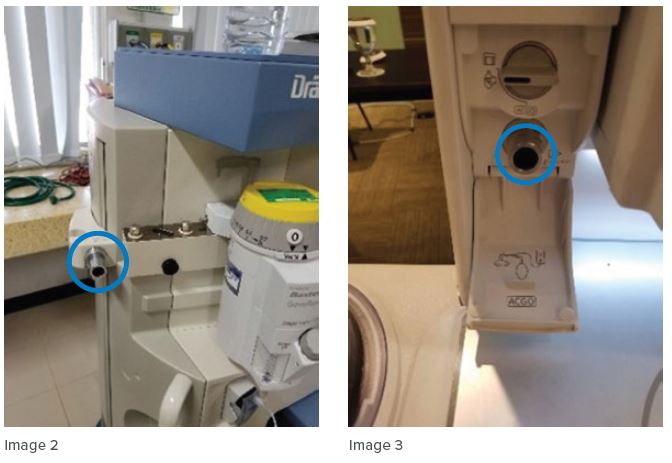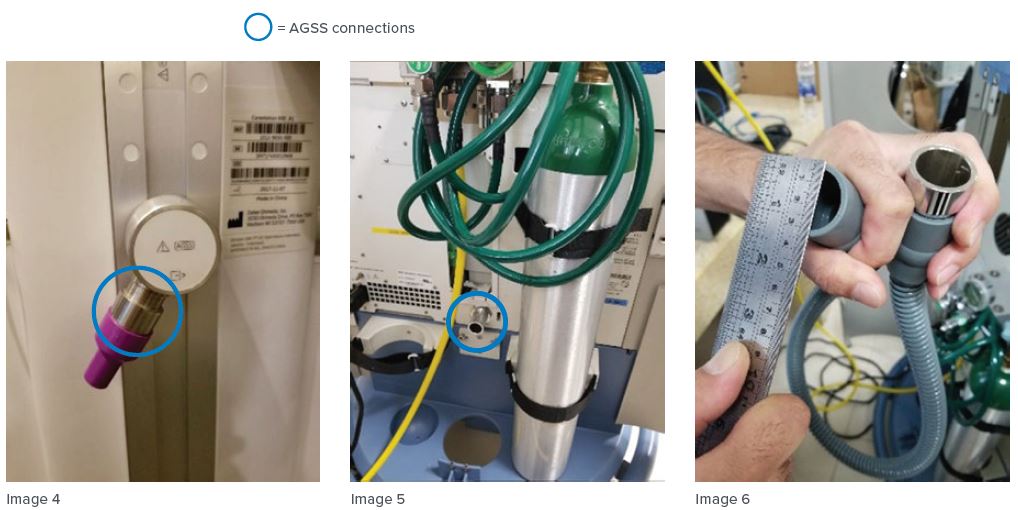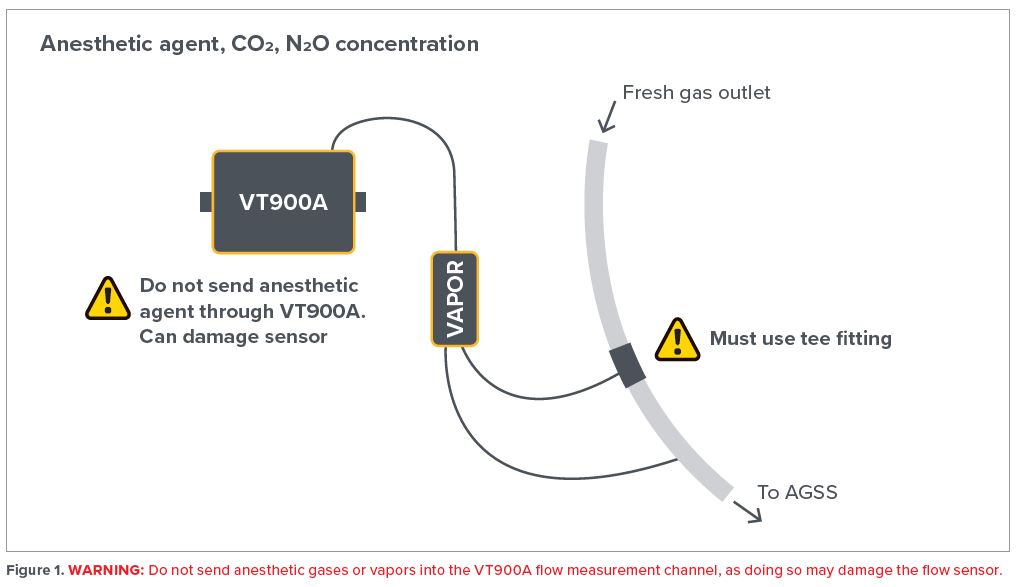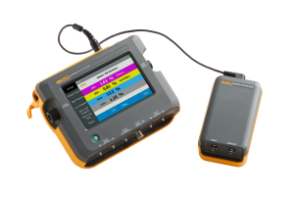Connecting the VT900A and VAPOR for Anesthesia System Testing
As with most medical device testing, the testing of anesthesia systems consists of multiple sections and steps, some of which need test instruments and others do not. In every case, the testing needs should be specific to the brand and model of the anesthesia system under test. The workflow (procedure) is usually easy to find in the brand and model-specific service manual, which is published and distributed by the manufacturer of the anesthesia system. In this application note, we will focus our attention on the points of the procedure requiring gas flow, pressure and concentration measurements.

Anesthesia test set-up
The anesthesia system begins with the anesthesia table (image 1) before connecting any breathing system or ventilator.
The connection you are looking for is typically the fresh gas outlet of the anesthesia system (images 2 and 3). This is the connection where a breathing circuit/system like a Mapleson is attached. This keeps gas concentration and gas flow measurement simple, compared to a circle re-breathing system with its dilution and titration requirements. The gas flow rate at the fresh gas outlet is continuous flow rather than the breath-by-breath Inspiratory and Expiratory flow rates in the breathing system (with or without the ventilator).
Please, make sure you do not attach the circle re-breathing system to this outlet (with the soda lime/bara lime cannisters).
All the gas concentration adjustments for the fresh gas flow are made in the anesthesia table controls (flow meters and vaporizers), and the vaporizer safety interlock system is also incorporated into the anesthesia table.

It is to the fresh gas outlet that we will connect the VT900A and VAPOR for gas concentration measurements.
Taking measurements using the VT900A and VAPOR
Before we go further with gas concentration measurement, let’s make it clear that anesthetic gases and agents need to be scavenged and not allowed to be released into the room where testing is taking place. The anesthesia sub-system that directs these waste gases appropriately is the AGSS (Anesthesia Gas Scavenging System). The AGSS standard connections are 19mm I.D./30mm O.D. These dimensions are different from the breathing system connections which are 15mm I.D./22mm O.D. The difference in the dimensions of each is to prevent inadvertent cross connection to protect the patient.
That said, we will purposefully connect our testing tubing to the AGSS to prevent the release of the anesthetic gases and vapors into the room (images 4-6). This interconnection will need to be improvised, since there is no commercially available adapter at this writing.

Connect VAPOR to the system as shown in the illustration for anesthesia gases and vapors measurement.

The measurement of gas flow will be limited to air and oxygen mixtures, and never nitrous oxide and oxygen mixtures. To measure gas flows and pressures from the anesthesia table, connect the tubing from the fresh gas outlet of the anesthesia table to the inlet of the VT900A flow channel.
The VT900A and VAPOR accessory are intended to aid trained and qualified personnel in the inspection and testing of anesthesia delivery systems and ventilators.
